Munmorah State Conservation Area
Learn more
Learn more about why this park is special
Munmorah State Conservation Area is a special place. Here are just some of the reasons why:
Bushtucker wonderland
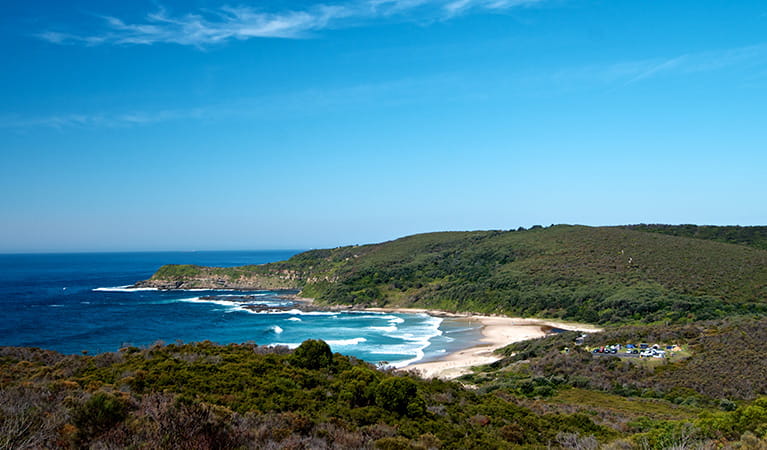
The original inhabitants of Munmorah, the Awabakal people, settled in an area abundant with food like the plentiful cabbage palm, lilly pilly, acacia seed, yams and flower nectars. They supplemented their diet with shellfish collected from rocks and fish caught with lines and spears in the rivers and lakes then cooked on small hearths onboard their canoes. The Awabakal people were also known to have visited Moon Island to gather muttonbird chicks and eggs, and hunted various mammals and reptiles on land.
Animal magic
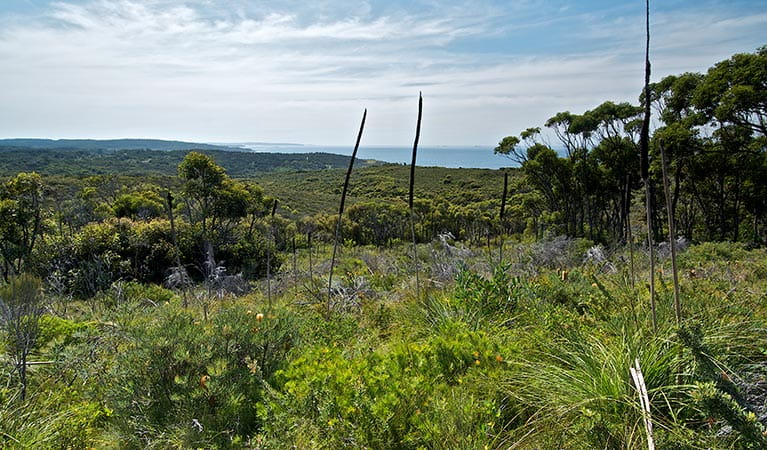
A huge number of bird and animal species call Munmorah State Conservation Area home. You might even spot the commonly found ringtail possum and sugar glider, and if you're really lucky, you might see the vulnerable squirrel glider, which lives in the eucalypt woodlands and rainforest in the northern part of the park. Scores of birds also come to rest at Munmorah as part of their long migratory journey - some flying from as far away as China and Japan. Look for gulls, terns, migratory waders and herons roosting on Munmorah's rocky platforms and feeding at the lake foreshore. If you're patient you might even spot the endangered little tern, or the vulnerable osprey and sooty oystercatcher.
- Moonee Beach trail This delightful walk through scenic coastal heath leads to the white sands of Moonee beach where you can relax, swim or fish before heading back along the walk.
- Palms circuit track After a tasty picnic lunch, escape to the cool rainforest of the Palms circuit track for an short loop walk beneath a canopy of cabbage tree palms.
Action packed
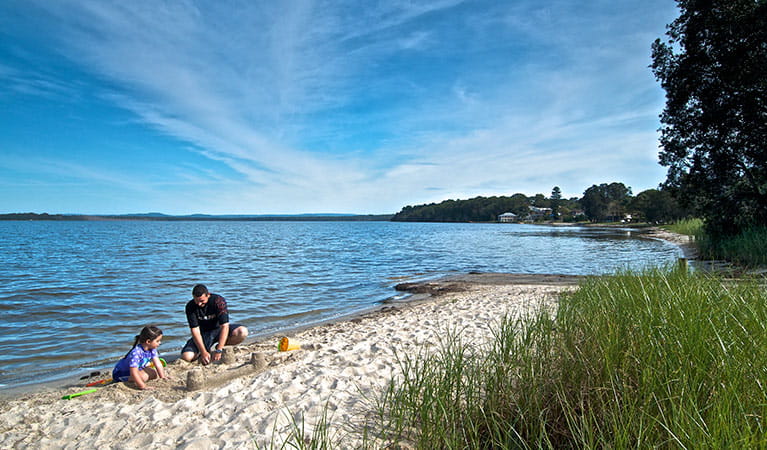
You’ll never be short of something to see or do at Munmorah. The Palms circuit track and the Moonee Beach trail are enjoyable walks that take you through very different but equally impressive vegetation and scenery. The park is an anglers with myriad places to drop a line. Keen surfers and hang gliders in the know also head to Munmorah. When it’s warm you can snorkel, swim and explore rockpools at the idyllic Birdie and Frazer beaches, and in the winter months go whale watching at Wybung Head or the Tea Tree lookout.
- Elizabeth Bay picnic area Enjoy a day out at this perfect picnic spot on the shores of tranquil Elizabeth Bay. Bring your boat and fishing rod, and don’t forget your swimmers.
- Tea Tree picnic area and lookout Check the surf and keep a keen eye out for whales from the lookout at Tea Tree picnic area. A short walk to Birdie Beach, it’s a great spot to stop for lunch and a swim.
Coast and beaches to crow about
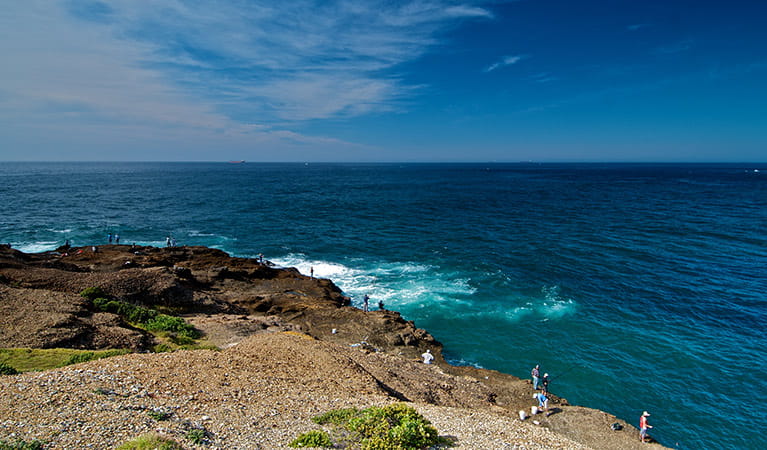
Whether you’re having lunch at the Elizabeth Bay picnic area or exploring the rock pools at the stunning Moonee Beach, Munmorah has some of the best coastline in the state. Frazer beach boasts a lagoon perfect to laze in when the weather's scorching, and the sandy beach is patrolled during the Christmas and Easter holidays. The 4km stretch of sand at Birdie beach is also a favourite, while to the far north there’s a nude bathing area. Dramatic panoramic views of the coastal cliffs and heath are another popular feature, especially from Wybung Head and on the walk down to Moonee Beach.
- Moonee Beach trail This delightful walk through scenic coastal heath leads to the white sands of Moonee beach where you can relax, swim or fish before heading back along the walk.
- Palms circuit track After a tasty picnic lunch, escape to the cool rainforest of the Palms circuit track for an short loop walk beneath a canopy of cabbage tree palms.
Plants and animals protected in this park
Animals
-
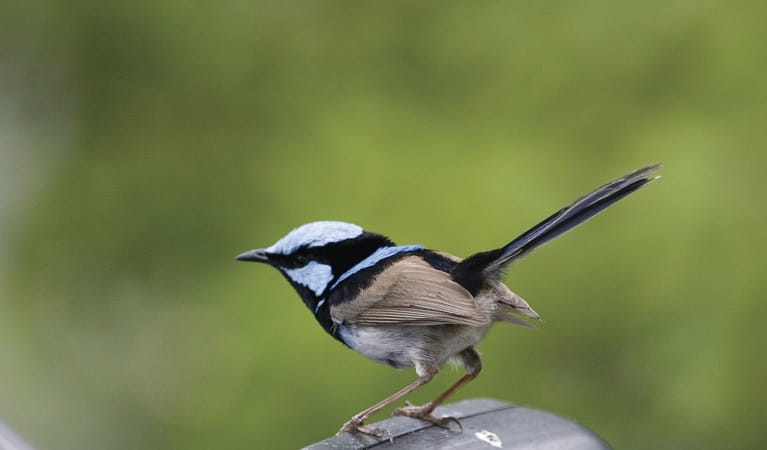
Superb fairy wren (Malurus cyaneus)
The striking blue and black plumage of the adult male superb fairy wren makes for colourful bird watching across south-eastern Australia. The sociable superb fairy wrens, or blue wrens, are Australian birds living in groups consisting of a dominant male, mouse-brown female ‘jenny wrens’ and several tawny-brown juveniles.
-

White-bellied sea eagle (Haliaeetus leucogaster)
White-bellied sea eagles can be easily identified by their white tail and dark grey wings. These raptors are often spotted cruising the coastal breezes throughout Australia, and make for some scenic bird watching. Powerful Australian birds of prey, they are known to mate for life, and return each year to the same nest to breed.
Plants
-
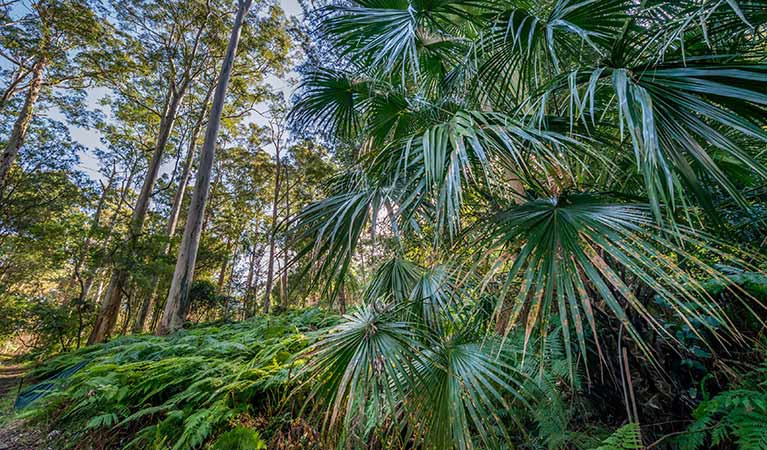
Cabbage palm (Livistona australis)
With glossy green leaves spanning 3-4m in length and a trunk reaching a height of up to 30m, the cabbage tree palm, or fan palm, is one of the tallest Australian native plants. Thriving in rainforest margins along the east coast of NSW, in summer this giant palm produces striking spikes of cream flowers which resemble cabbages.
-

Grass tree (Xanthorrea spp.)
An iconic part of the Australian landscape, the grass tree is widespread across eastern NSW. These Australian native plants have a thick fire-blackened trunk and long spiked leaves. They are found in heath and open forests across eastern NSW. The grass tree grows 1-5m in height and produces striking white-flowered spikes which grow up to 1m long.
-
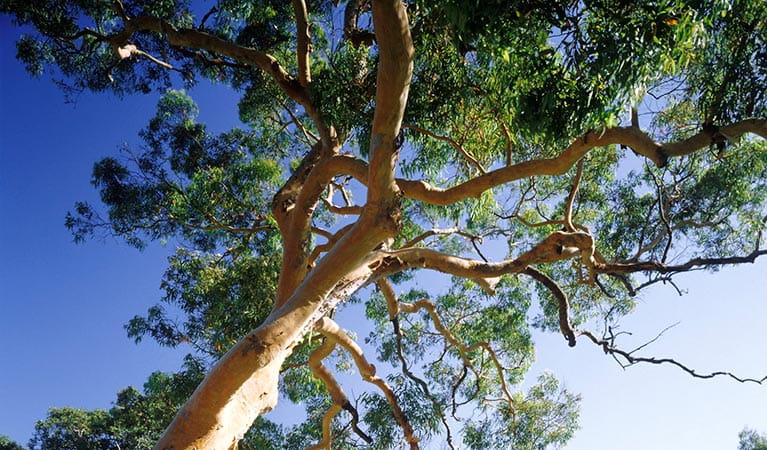
Smooth-barked apple (Angophora costata)
Smooth-barked apple gums, also known as Sydney red gum or rusty gum trees, are Australian native plants found along the NSW coast, and in the Sydney basin and parts of Queensland. Growing to heights of 15-30m, the russet-coloured angophoras shed their bark in spring to reveal spectacular new salmon-coloured bark.
Look out for...
Grass tree
Xanthorrea spp.
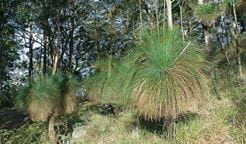
An iconic part of the Australian landscape, the grass tree is widespread across eastern NSW. These Australian native plants have a thick fire-blackened trunk and long spiked leaves. They are found in heath and open forests across eastern NSW. The grass tree grows 1-5m in height and produces striking white-flowered spikes which grow up to 1m long.